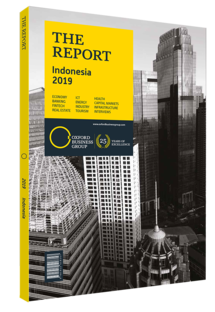New regulations to ease the financial burden of domestic coal power plants in Indonesia
Given the current market dynamics, state-owned utility Perusahaan Listrik Negara (PLN) is unable to pass increases in the cost of coal on to the consumer because subsidised rates of electricity are imposed by the central government. In a bid to shield PLN from price fluctuations, the Indonesian government implemented regulations on domestic coal prices in 2018.
Price Cap
In March 2018 policymakers announced that the price of domestic coal purchased by power stations would be capped at between $37 and $70 per tonne for two years, depending on coal type. The new rule was imposed to maintain subsidised electricity tariffs while shielding PLN from coal price fluctuations. This was made effective from the March approval date, with a review set to take place at end-2019.
This new regulation is in addition to the existing domestic market obligation (DMO) scheme, the new rule compelling coal mining companies operating in Indonesia to supply 25% of their output to the domestic market. In terms of pricing, in 2018 PLN will pay $37 for any coal type less than 4500 kcal per kg gross as received (GAR); $43 for any coal type within 4500-6000 kcal per kg GAR; and a maximum of $70 for coal exceeding 6000kcal per kg GAR. If the government’s benchmark coal price falls below the $70 mark, then the selling price for coal to the domestic power market will revert back to the coal benchmark price. Following the introduction of the price cap, estimates from the strategic procurement department of PLN suggested that the firm would save around $1.3bn in 2018 alone, provided the coal benchmark price averaged at least $100 until the end of the year.
The new regulations were met with mixed sentiment. While the price cap was a positive development for Indonesian power plant operators, particularly PLN, local coal miners witnessed a fall in revenue and share prices. With power plants accounting for the majority of domestic demand, coal miners lost out on potential earnings. Similarly, the Indonesian government has seen a fall in tax and royalty collection. Despite the drawbacks, coal miners have an incentive to meet new requirements: under the new rules, miners that fulfil their DMO percentage share will be allowed to increase their approved production quota by 10%.
Index Impact
Prior to the coal price cap the Indonesian mining share index (MSI) was up around 33% from the previous year, outperforming all other asset classes in the process. However, within one trading week of the official announcement the MSI had declined by more than 4%, from 1949.58 to 1874.42. Several months after the price cap was introduced, the Ministry of Energy and Mineral Resources announced that it had plans to replace it with a levy of $2-3 per tonne. This saw the MSI reach a 12-month high of 2173.55 on July 30, 2018. However, the DMO was still in play, and the index reached a 12-month low of 1,660.20 in November 2018 before recovering to 1879.71 as of March 2019.
The Hungry Dragon
Chinese demand for coal continues to be the main influencer of market fluctuations. Coal imports by China rose in the first 10 months of 2018 to 252m tonnes, an increase of 11% compared to the same period in 2017. However, due to abundant Chinese supply, new import limitations were imposed towards the end of 2018. The Chinese government’s decision to rein in purchases of overseas coal saw China National Building Materials International, a major buyer of Indonesian coal, halt orders in December. As a result, coal prices eased at the back end of 2018 and early 2019. As of March 2019 Indonesia’s thermal coal reference price was $90.57 per tonne, based on 6322 kcal per kg GAR coal with a content of 8% total moisture, 15% ash and 0.8% sulphur.
State efforts to support PLN and shield consumers from rising costs have received mixed reviews. Supporters point to the strengthened utilities company, while detractors raise concerns about free-market conventions. Despite conflicting opinions, the longterm impact of the regulations are yet to be seen.
You have reached the limit of premium articles you can view for free.
Choose from the options below to purchase print or digital editions of our Reports. You can also purchase a website subscription giving you unlimited access to all of our Reports online for 12 months.
If you have already purchased this Report or have a website subscription, please login to continue.

